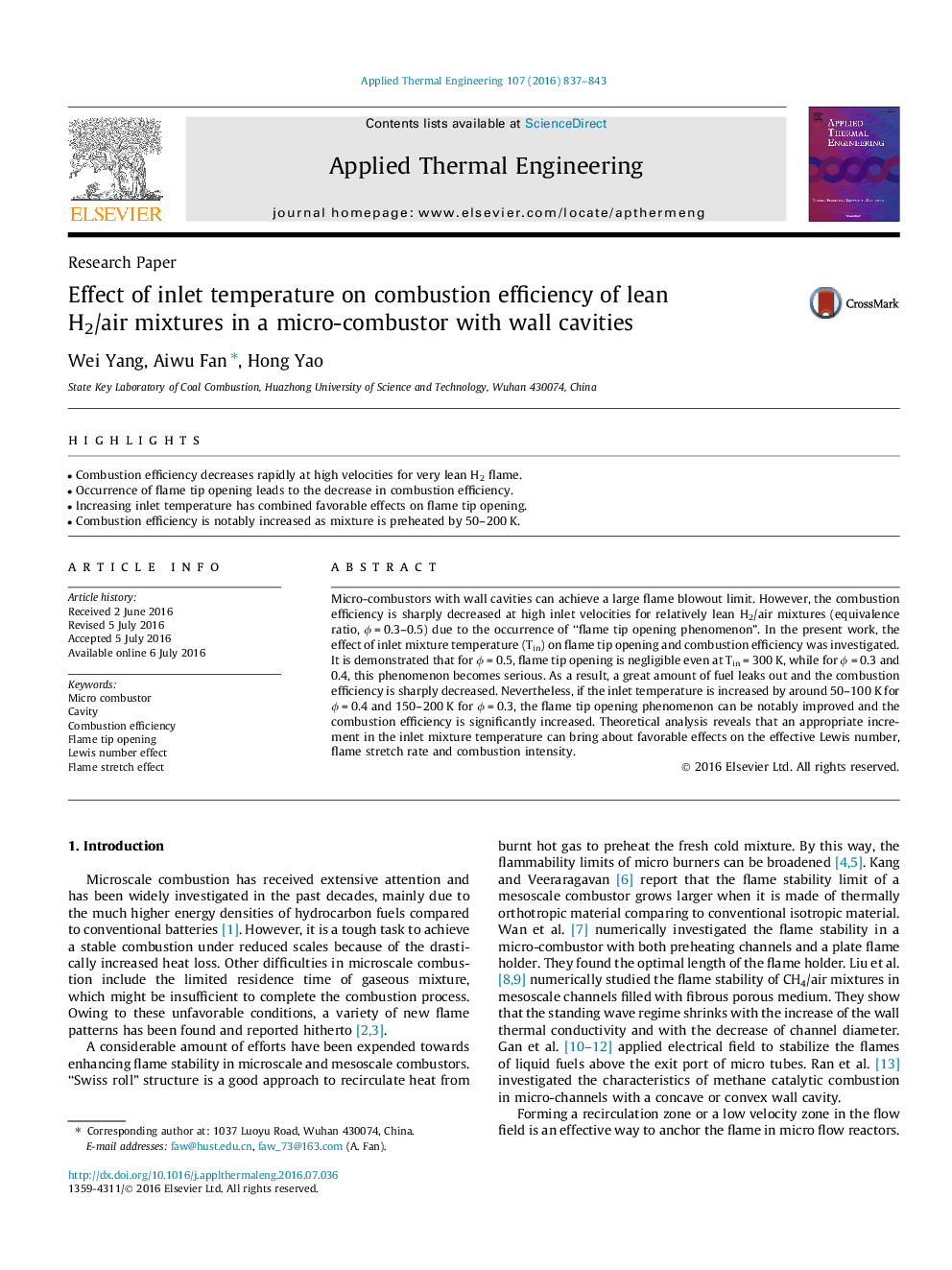| Article ID | Journal | Published Year | Pages | File Type |
|---|---|---|---|---|
| 7047359 | Applied Thermal Engineering | 2016 | 7 Pages |
Abstract
Micro-combustors with wall cavities can achieve a large flame blowout limit. However, the combustion efficiency is sharply decreased at high inlet velocities for relatively lean H2/air mixtures (equivalence ratio, Ï = 0.3-0.5) due to the occurrence of “flame tip opening phenomenon”. In the present work, the effect of inlet mixture temperature (Tin) on flame tip opening and combustion efficiency was investigated. It is demonstrated that for Ï = 0.5, flame tip opening is negligible even at Tin = 300 K, while for Ï = 0.3 and 0.4, this phenomenon becomes serious. As a result, a great amount of fuel leaks out and the combustion efficiency is sharply decreased. Nevertheless, if the inlet temperature is increased by around 50-100 K for Ï = 0.4 and 150-200 K for Ï = 0.3, the flame tip opening phenomenon can be notably improved and the combustion efficiency is significantly increased. Theoretical analysis reveals that an appropriate increment in the inlet mixture temperature can bring about favorable effects on the effective Lewis number, flame stretch rate and combustion intensity.
Related Topics
Physical Sciences and Engineering
Chemical Engineering
Fluid Flow and Transfer Processes
Authors
Wei Yang, Aiwu Fan, Hong Yao,
